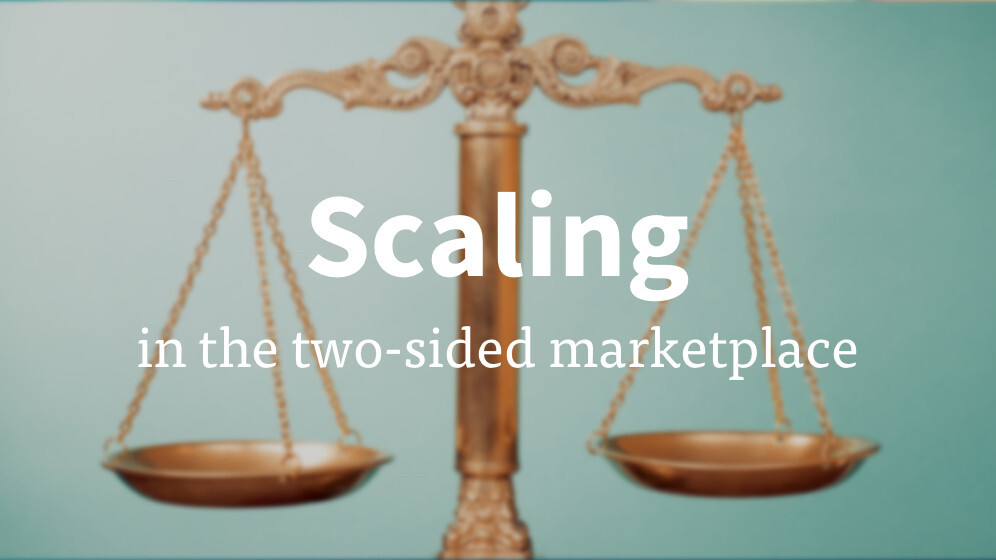
Umang Dua is the COO and Co-Founder of Handy. He recently spoke at The Next Web Conference USA. Registration for 2-for-1 tickets for The Next Web Europe is now open, click here to sign up.
Building a marketplace is hard. Getting it to scale seamlessly is even harder. Handy, the on-demand home service is a global brand available in 28 markets across three countries, now doing thousands of home cleaning and repair bookings every day. But this wasn’t always the case; we got to where we are today as a result of careful and deliberate actions (and many mistakes) that have let us build a two-sided marketplace ripe with consumers and service professionals.
One of the amazing things about such models is that if you understand how to get the flywheel spinning, it can scale very quickly. However, getting it right initially and building momentum is immensely challenging. And while building a two-sided marketplace is as much of an art as a science at the end of the day, here are some strategies that have helped us along the way.
Begin in a small concentrated area
For a marketplace to work you need depth and engagement in a focused vertical or geographical region. Rather than spreading yourself too thin and learning little about user behavior or failing to understand market dynamics, it is important to be focused on the basic fundamentals. For Handy, this meant concentrating on just home cleaning in a few markets.
More specifically, in the beginning we zeroed in on just a handful of zip codes in the key markets of New York, San Francisco and Boston. This made it easier to recruit the best professionals, better serve customers and understand the dynamics of each market. While, in some ways, this may initially limit your perceived attractiveness or sacrifice short-term growth; it’s the only way to accelerate learning and grow strategically for the long-term.
Once you feel like you have the fundamentals in place, it is much easier to branch out and replicate with confidence rather than make something big and inefficient work.
The chicken and egg
Sequencing and prioritizing is critical with marketplaces. We knew when we created Handy that this was a product that everyone could use – but having too many consumers and not enough professionals – or vice versa – is an issue we are constantly aware of. Entering a new market brings this problem to a head as we balance unknown supply with unknown demand.
To solve this, it is critical to have a clear launch plan – which side of the market do you need to target first, what is your value proposition to them, and how can you keep them engaged and returning? At Handy, our focus begins with the service professional and making sure we hire quality professionals over sheer volume.
If you oversupply, then you risk not being able to provide professionals with a steady job flow and, in turn, risk losing quality professionals even to the outdated models, ultimately throwing the entire platform off balance. Over time, as you scale in a city, you can use data to better understand when, and how much supply and demand you need to keep the market healthy. In the beginning however, it’s critical to sequence the market entry strategy correctly.
In today’s digital age, marketplaces bridge a previously impassable gap between the consumer and the service professional offering direct, immediate connection in a disjointed world.
Marketplaces have the power to enhance the lives of millions of customers and service providers (and to do so at a rapid pace). However, you have to start somewhere – and it’s important you give yourself every chance of success immediately from launch.
Umang Dua is the COO and Co-Founder of Handy. He recently spoke at The Next Web Conference USA. Registration for 2-for-1 tickets for The Next Web Europe is now open, click here to sign up.
Image credit: Shutterstock
Get the TNW newsletter
Get the most important tech news in your inbox each week.





